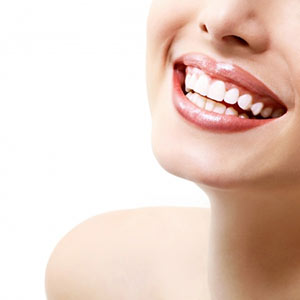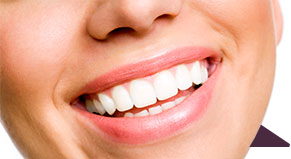5 Romantic (And Teeth-Friendly) Restaurants on Chicago's Magnificent Mile
February 9th, 2017

One of the most popular things that couples do on Valentine’s Day is to go out to eat. Maybe you’re looking to try a new restaurant, or maybe you have a place that you like to go to year after year. But regardless of where you go, it’s a great time to treat yourself. Splurge on the chocolate cake or have an extra glass of wine, but make sure you’re balancing it out with the rest of your meal. Foods like these can be damaging to your teeth, but did you know that when food is eaten as part of a meal, it causes less harm than snacking throughout the day? It’s true! More saliva is released during meals, which helps wash foods away from the teeth and lessens the effects of the acidity, which can harm teeth and cause cavities. So, splurge away this Valentine's Day!
There are some really fantastic restaurants where you can celebrate Valentine’s Day with your sweetheart right on Chicago's Magnificent Mile. Here are some of our favorites:
1. The Purple Pig
Named one of Bon Appetit’s “10 Best New Restaurants in America” in 2010, the Purple Pig has a rustic feel with a focus on pork, although the menu has many other standout dishes. They have some shareable plates on the menu, too, which is a great way to share a Valentine’s Day meal with your sweetie.
Split the salt and vinegar beef tendon chips for an appetizer, and then try the milk braised pork shoulder with mashed potatoes or the Greek style chicken. Follow your meal with some brown butter panna cotta or pistachio cake.
2. NoMi Kitchen
Located in the Park Hyatt, NoMi Kitchen was named one of the 10 best hotel restaurants in the world. Sit in NoMi Kitchen and enjoy the chic, contemporary setting while looking out at the panoramic view of the city. Or, head up to the seventh floor of the hotel and enjoy the NoMi Lounge.
At the Kitchen, you can try the beef tartare to start, then order the rainbow trout to share with your date and a side of mac and cheese. For dessert, try their handmade ice cream of sorbet. Or, stop by the Lounge and try the handmade seasonal pickles for an appetizer and their sushi or sashimi for your main.
3. Joe’s Seafood, Prime Steak, and Stone Crab
If you’re looking for a place where you and your Valentine can feel fancy, have your Valentine’s Day meal at Joe’s. It has a supper club setting, and the tuxedoed staff will make your evening feel even more special. They have a wide range of seafood dishes to try, from stone crab to fish and chips to Chilean seabass.
Try the fried calamari or steak tartare for a starter, and then have a classic hamburger, porterhouse with a baked potato, or the crispy fried shrimp with a side of fried asparagus. For dessert, try the cheesecake.
4. Shanghai Terrace
Zagat named Shanghai Terrace the “Best Chinese Restaurant in Chicago.” It offers amazing cocktails, delicious food, and a 1930s supper club decor. Located in the Peninsula Hotel, they offer a special Valentine's Day menu that consists of five courses and dessert.
If you come here to celebrate, you can enjoy a dim sum trio, fried prawns, westlake beef chowder, sweet and sour chicken, spicy lamb with black bean sauce, and green tea and white chocolate raspberry cake for dessert.
5. Bandera
A Bandera, they have live jazz every night and a menu of American food with a southwestern twist. Stop in the comfortable and inviting restaurant and enjoy the view of Michigan Avenue while you enjoy the famous skillet cornbread, fresh and still warm from the oven.
Try the spinach and artichoke dip to start. For the main course, try a burger, Seattle style BBQ salmon, or their aged and seasoned prime rib. Add some tabbouleh, or some hand cut french fries as a side and finish it off with some apple walnut cobbler or homemade Oreo ice cream sandwiches.
The Magnificent Mile is a wonderful place to spend Valentine’s Day with that special someone. As you can see, there are a variety of cuisines available, each with its own distinct atmosphere. You’re sure to find the perfect place for a meal with your Valentine. Remember, Valentine’s Day dinner is a great time to indulge. Just remember to brush your teeth when you get home.
If you have any questions about how to take care of your teeth, or if you'd like to book an appointment with Chicago's number one dentistry, Water Tower Dental Care, contact us today.

 When you’re fast asleep, the last thing you’re thinking about is your teeth. (Unless you’re having a dental dream, of course.) So it’s important to make sure that your teeth are well protected before you hit the hay for a long night of sleep. We’ve put together a short checklist that you can use every night before you go to bed to keep your teeth protected all night long.
When you’re fast asleep, the last thing you’re thinking about is your teeth. (Unless you’re having a dental dream, of course.) So it’s important to make sure that your teeth are well protected before you hit the hay for a long night of sleep. We’ve put together a short checklist that you can use every night before you go to bed to keep your teeth protected all night long. The wonderful thing about being early for a Water Tower Dental Care appointment is our location! Since we’re located in what many consider Chicago’s best shopping mall, you don’t have to succumb to boredom while waiting in a dental office for your name to be called. Instead, we encourage you to go out and explore Water Tower Place and Chicago’s Magnificent Mile!
The wonderful thing about being early for a Water Tower Dental Care appointment is our location! Since we’re located in what many consider Chicago’s best shopping mall, you don’t have to succumb to boredom while waiting in a dental office for your name to be called. Instead, we encourage you to go out and explore Water Tower Place and Chicago’s Magnificent Mile! Food products like garlic and onion are known to cause
Food products like garlic and onion are known to cause  Salt, or sodium, has often said to be both good and bad for your teeth. While high sodium-intake has generally been associated with many detrimental effects, (which is why healthy eating has also been associated with staying away from food rich in sodium) many people practicing good oral hygiene will rinse their mouth with salt. Is salt actually good or bad for your teeth? Here are some of the pros and cons:
Salt, or sodium, has often said to be both good and bad for your teeth. While high sodium-intake has generally been associated with many detrimental effects, (which is why healthy eating has also been associated with staying away from food rich in sodium) many people practicing good oral hygiene will rinse their mouth with salt. Is salt actually good or bad for your teeth? Here are some of the pros and cons: We’ve all been there. Eating lunch with a coworker or a friend and getting a big piece of food stuck in our teeth. They may point out that you have something stuck in between your pearly whites and you may quickly work to get it out. Or, even worse, you might notice it afterwards in the mirror and know that they were too hesitant to point it out.
We’ve all been there. Eating lunch with a coworker or a friend and getting a big piece of food stuck in our teeth. They may point out that you have something stuck in between your pearly whites and you may quickly work to get it out. Or, even worse, you might notice it afterwards in the mirror and know that they were too hesitant to point it out. The 13-block stretch that you find our office on is called Chicago’s Magnificent Mile for a reason. It’s filled with the best in shopping, restaurants and entertainment (and dentists!) in Chicago. It truly is magnificent.
The 13-block stretch that you find our office on is called Chicago’s Magnificent Mile for a reason. It’s filled with the best in shopping, restaurants and entertainment (and dentists!) in Chicago. It truly is magnificent. Many people who wear braces are worried about keeping their teeth white. After all, cleaning your teeth is much more difficult with braces, and you can’t really use teeth-whitening products on the part of your teeth that’s covered up. What you can do, though, is prevent your teeth from discoloring. Find out how to do this with these 11 easy tips from our dental experts.
Many people who wear braces are worried about keeping their teeth white. After all, cleaning your teeth is much more difficult with braces, and you can’t really use teeth-whitening products on the part of your teeth that’s covered up. What you can do, though, is prevent your teeth from discoloring. Find out how to do this with these 11 easy tips from our dental experts. Sensitive teeth can be caused by a number of issues including an exposed nerve, a fractured or worn tooth, and receding gums. While visiting a dentist is the best way to prevent most of these issues, you can avoid the pain that is associated with sensitive teeth by limiting certain foods and drinks. Here are the most common types of food that can agitate your teeth and cause a lot of pain.
Sensitive teeth can be caused by a number of issues including an exposed nerve, a fractured or worn tooth, and receding gums. While visiting a dentist is the best way to prevent most of these issues, you can avoid the pain that is associated with sensitive teeth by limiting certain foods and drinks. Here are the most common types of food that can agitate your teeth and cause a lot of pain.
 We all hate dealing with bad breath. Whether it’s our own or someone else’s, it’s never a fun experience. And even though you may brush, floss, and use mouthwash everyday, you still find that your breath can become rather nasty by the end of the day (or less fortunately, the middle). Great oral hygiene is a start to combating bad breath, however, sometimes our bad breath is directly related to the food we do (and don’t) eat. There are plenty of foods that cause bad breath, and some that help fight the awful smells. Here’s our list of the top foods for each.
We all hate dealing with bad breath. Whether it’s our own or someone else’s, it’s never a fun experience. And even though you may brush, floss, and use mouthwash everyday, you still find that your breath can become rather nasty by the end of the day (or less fortunately, the middle). Great oral hygiene is a start to combating bad breath, however, sometimes our bad breath is directly related to the food we do (and don’t) eat. There are plenty of foods that cause bad breath, and some that help fight the awful smells. Here’s our list of the top foods for each. We spend a considerable amount of time discussing the
We spend a considerable amount of time discussing the  While listing out your New Years resolutions this time around, consider adding a few resolutions for your health, and specifically, your mouth. Keeping your teeth, gums, and tongue in good shape can help you in the years to come. Practicing good oral hygiene will help you look and feel good, along with allow you to avoid major dental surgeries and complications in the future. Here are 5 tips you can easily make into New Years resolutions for a better, healthier smile.
While listing out your New Years resolutions this time around, consider adding a few resolutions for your health, and specifically, your mouth. Keeping your teeth, gums, and tongue in good shape can help you in the years to come. Practicing good oral hygiene will help you look and feel good, along with allow you to avoid major dental surgeries and complications in the future. Here are 5 tips you can easily make into New Years resolutions for a better, healthier smile. Last week we listed the solutions for fixing a chipped tooth. Today we'd like to get a little more in depth on some of the harmful foods and activities that can crack, chip, or fracture a tooth.
Last week we listed the solutions for fixing a chipped tooth. Today we'd like to get a little more in depth on some of the harmful foods and activities that can crack, chip, or fracture a tooth. Teeth need a great deal of calcium to stay strong, there's almost no better food to get it than through dairy products. Milk and cheese especially are great for your teeth and jawbone. Calcium prevents tooth decay by protecting your teeth from periodontal disease, a form of gum disease, as well as maintaining healthy bone structure of the teeth and jaw. About one-third of your body's bones and teeth are made of calcium, so it's important to have a great deal of it in your system. Yogurt, tofu, and soy milk are also good sources of calcium.
Teeth need a great deal of calcium to stay strong, there's almost no better food to get it than through dairy products. Milk and cheese especially are great for your teeth and jawbone. Calcium prevents tooth decay by protecting your teeth from periodontal disease, a form of gum disease, as well as maintaining healthy bone structure of the teeth and jaw. About one-third of your body's bones and teeth are made of calcium, so it's important to have a great deal of it in your system. Yogurt, tofu, and soy milk are also good sources of calcium. Another great food that’s rich in both calcium and Vitamin D is salmon. Without Vitamin D, your body cannot absorb and utilize the calcium that you've just consumed from your dairy products. Consuming food rich in Vitamin D is essential to healthy teeth. What better food to eat than salmon for your Vitamin D as it's also rich in Omega-3 fatty acids which help cognitive function, eye, cardiovascular, skin, and hair health.
Another great food that’s rich in both calcium and Vitamin D is salmon. Without Vitamin D, your body cannot absorb and utilize the calcium that you've just consumed from your dairy products. Consuming food rich in Vitamin D is essential to healthy teeth. What better food to eat than salmon for your Vitamin D as it's also rich in Omega-3 fatty acids which help cognitive function, eye, cardiovascular, skin, and hair health. Though mostly all vegetables are great for your teeth, there are many benefits to crunchier vegetables like cauliflower, broccoli, and cucumber. Crunchy vegetables contain many vitamins, minerals, and antioxidants that are all good for your health. Specifically to teeth, they contain Vitamin C, which helps prevent plaque and bacteria. As well, crunchy vegetables contain phosphorus, which is another major player in absorbing calcium. Last, crunchy vegetables promote and stimulate your salivary production. This is the body's natural way of washing debris and food from your teeth and gums while providing disease-fighting enzymes throughout your mouth to prevent infection.
Though mostly all vegetables are great for your teeth, there are many benefits to crunchier vegetables like cauliflower, broccoli, and cucumber. Crunchy vegetables contain many vitamins, minerals, and antioxidants that are all good for your health. Specifically to teeth, they contain Vitamin C, which helps prevent plaque and bacteria. As well, crunchy vegetables contain phosphorus, which is another major player in absorbing calcium. Last, crunchy vegetables promote and stimulate your salivary production. This is the body's natural way of washing debris and food from your teeth and gums while providing disease-fighting enzymes throughout your mouth to prevent infection. While crunchy vegetables are a good source of Vitamin C, oranges and other citrus fruits are your ultimate source. Vitamin C is extremely important to the teeth because of its ability to strengthen blood vessels and connective tissues. This is vital to keeping your teeth connected to your jaw. As well, vitamin C is an anti-inflammatory, which can help reduce and/or slow the progression of gingivitis.
While crunchy vegetables are a good source of Vitamin C, oranges and other citrus fruits are your ultimate source. Vitamin C is extremely important to the teeth because of its ability to strengthen blood vessels and connective tissues. This is vital to keeping your teeth connected to your jaw. As well, vitamin C is an anti-inflammatory, which can help reduce and/or slow the progression of gingivitis. Last, onions are a great source for anti-bacterial sulphur compounds, which play a major role in killing a lot of the bacteria that breed on your teeth and gums. If you don't mind just a little stinky breath for a minute, it's best to eat the onions raw. This will help you get the best from the vegetable to help prevent a fair amount of tooth decay.
Last, onions are a great source for anti-bacterial sulphur compounds, which play a major role in killing a lot of the bacteria that breed on your teeth and gums. If you don't mind just a little stinky breath for a minute, it's best to eat the onions raw. This will help you get the best from the vegetable to help prevent a fair amount of tooth decay.




 Website Powered by Sesame 24-7™
Website Powered by Sesame 24-7™